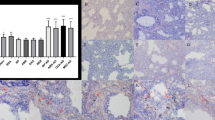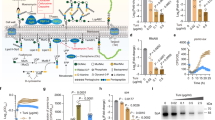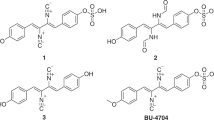Abstract
THE work of Gale1 points to the possibility that penicillin may act by depriving sensitive organisms of glutamic acid, which is probably essential to their life. The present work was instituted to find out whether penicillin, by being itself adsorbed, blocks the passage of glutamic acid through the cell wall.
This is a preview of subscription content, access via your institution
Access options
Subscribe to this journal
Receive 51 print issues and online access
$199.00 per year
only $3.90 per issue
Buy this article
- Purchase on SpringerLink
- Instant access to full article PDF
Prices may be subject to local taxes which are calculated during checkout
Similar content being viewed by others
References
Gale, E. F., and Taylor, E. S., J. Gen. Microbiol., 1, 314 (1947).
Hobby, G. L., Meyer, K., and Chaffee, E., Proc. Soc. Exp. Biol., N.Y., 50, 281 (1942).
Jarvis, F. G., and Johnson, M. J., J. Amer. Chem. Soc., 69, 3010 (1947).
Lester-Smith, E., Quart. J. Pharm., 19, 309 (1946).
Howell, S. F., Thayer, J. D., and Labow, L. W., Science, 107, 299 (1948).
Author information
Authors and Affiliations
Rights and permissions
About this article
Cite this article
ROWLEY, D., MILLER, J., ROWLANDS, S. et al. Studies with Radioactive Penicillin. Nature 161, 1009–1010 (1948). https://doi.org/10.1038/1611009a0
Issue date:
DOI: https://doi.org/10.1038/1611009a0
This article is cited by
-
The relationship between structure and biological activity: Some fundamental aspects
Ergebnisse der Physiologie Biologischen Chemie und Experimentellen Pharmakologie (1957)
-
Investigations with Radioactive Penicillin
Nature (1949)



